"The Indian horticultural market is increasing year on year. Investors are there; money is being pumped in; and projects both big and small are being built throughout the country, but the knowledge base simply isn't there," says Benjamin Blanchard of Biogrow Substrates. The company has just harvested their first crop of cherry tomatoes from their brand-new hydroponic training facility in Bangalore, India, and, together with Fabrice Fievre, he updates us on the developments in soilless farming and potential of the market.
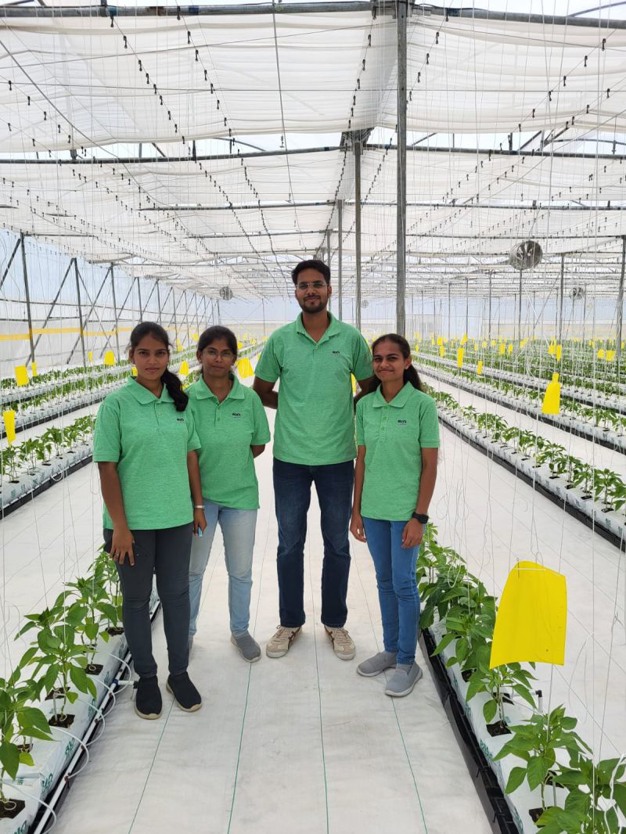
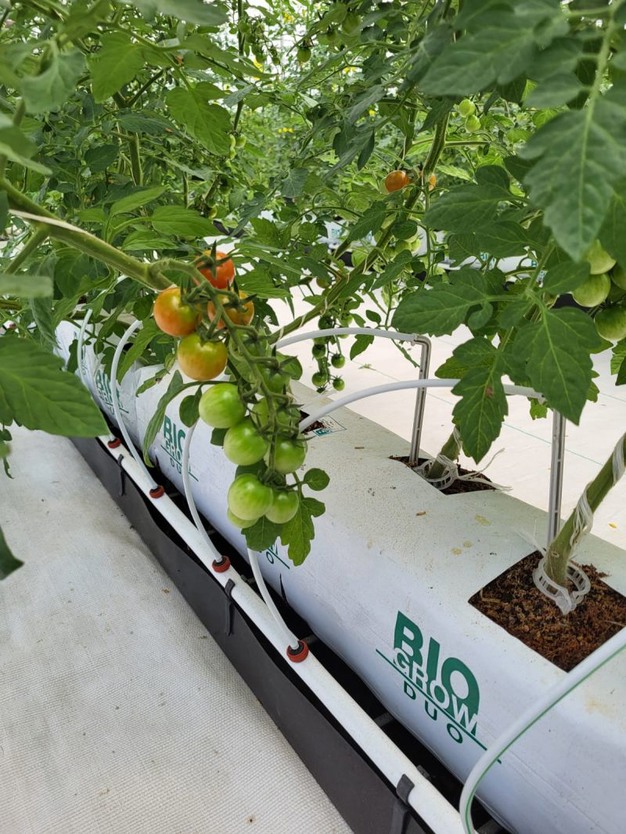
Initially focused on exporting their cocopeat substrates from India, Biogrow Substrates noticed a rising demand for hydroponic solutions among local companies and decided to answer to it. "Our original plan was to sell via distributors, like we do in most other countries," Benjamin explains. "But we realized that to develop the market truly, we needed to provide technical support directly to growers." He explains that the hydroponic technique of growing is relatively new in India, resulting in a loss of trust in either the concept or in the products used, if a crop doesn't succeed. "If there's a problem, we need to be there to help our clients. That's why we decided to build a team of salespeople with strong agronomic knowledge and invest in educating the market."
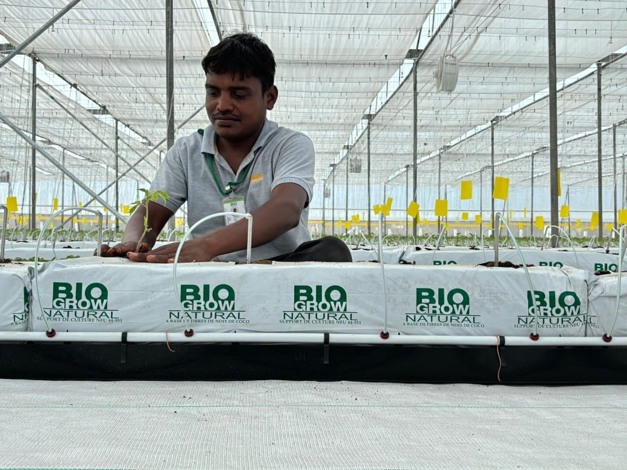
The new training center, spanning 1.5 acres, features a greenhouse designed to be both affordable and practical for local growers. "Local growers can visit and see that it's not high-tech; they can afford and duplicate this greenhouse," CEO Fabrice Fievre explains. "We're using locally sourced products such as the fertigation system, as we see growers often opt for these techniques, also because there's often government support available for locally produced products."
The training center aims to equip growers with basic yet crucial skills, such as drainage and EC checking, irrigation cycles, scouting, and trellising. "Our goal is to help growers understand these basics. As the clients develop, so will our training programs."
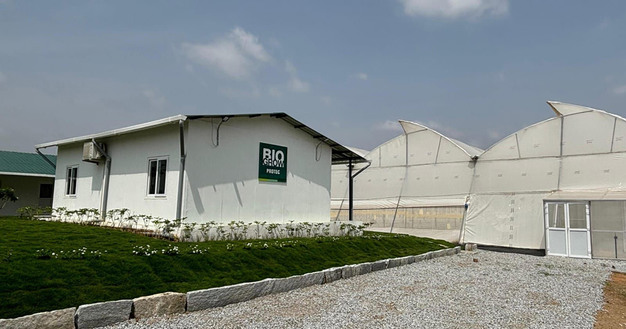
The first crops planted include bell peppers, cherry tomatoes, and round tomatoes, with possible expansion to strawberries in the upcoming years. Benjamin says: "Tomatoes are a big crop, but for greenhouses, bell peppers are even bigger, as these are eaten fresh, whereas tomatoes are often cooked, resulting in lower demand for quality produce." He explains how the tomato market is also very volatile, with prices shifting from as little as 2 rupees per kg to as much as 200. "This makes investors and investors cash and capital cautious when investing. Peppers on the other hand, are popular in Chinese style foods used in local cuisines.
When asked about the current market, Benjamin notes the significant differences between regions. "But in general, the current facilities in India are mostly low-to mid-tech, with naturally ventilated polyhouses. There are some imported systems for fertilizers, for example, but this increases the initial investment cost, and confidence in these systems is not yet present." At the same time, he sees a burgeoning Indian horticultural market, driven by both domestic and international investments, and, sometimes, government support. "State subsidies on structures and techniques of up to 50% are available, but only for Indian-made products."
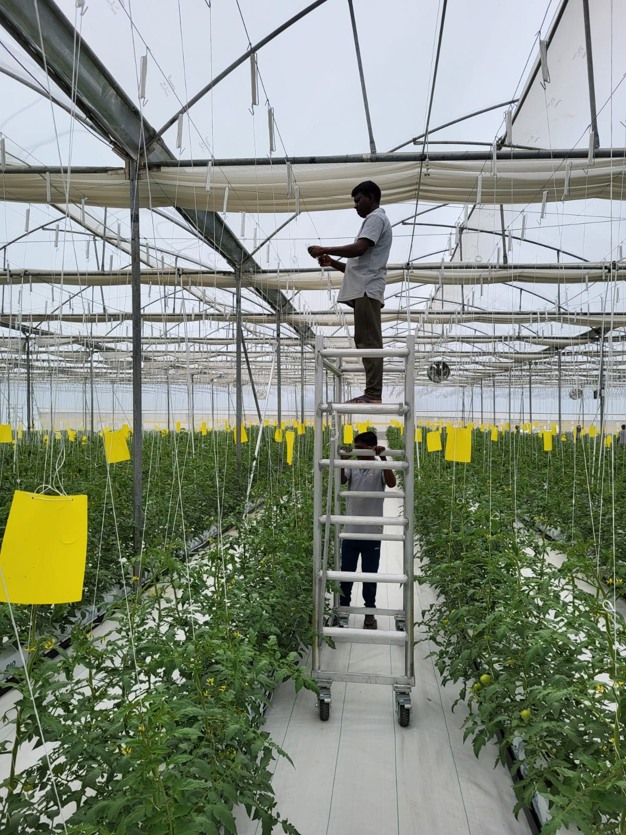
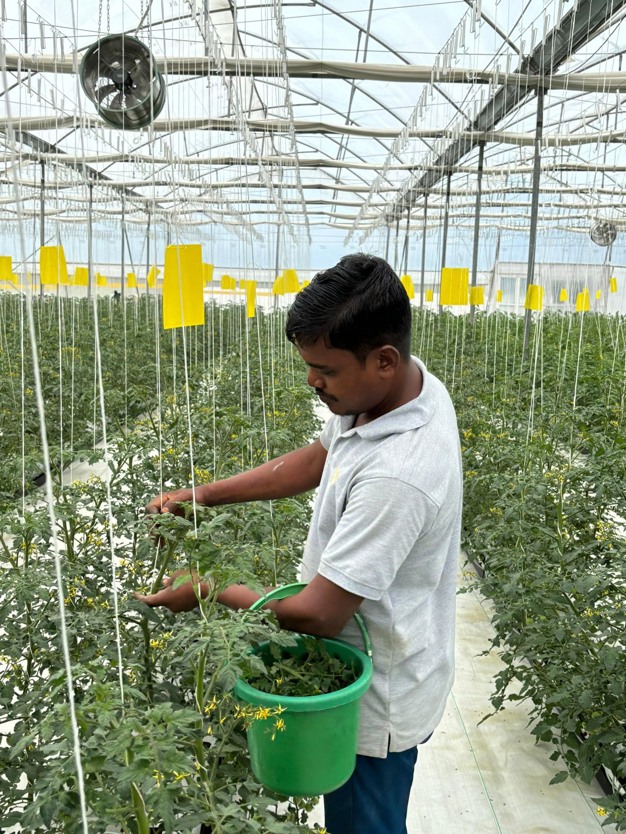
One thing is clear: the industry is ready to develop further, and greenhouses seem like a logical next step, addressing several of the country's challenges. For example, the climate across India varies greatly, with temperatures ranging from 6 degrees in winter to 52 degrees in summer. Bangalore, situated 900 meters above sea level, offers a relatively favorable climate, although it lacks the chill factor required for strawberries, he explains. However, water scarcity remains an important challenge: "Bangalore had five months with no rain this year, which is a major issue."
Post-harvest infrastructure is another area in which significant improvement is needed. "Today, there's minimal cold chain infrastructure; even the fridges in supermarkets sometimes don't work," Benjamin says. "This is especially critical for soft fruits like strawberries. Building a reliable cold-chain culture will take many more years."
Food needed
Currently, Biogrow Substrates serves over 250 clients in India, with farm sizes ranging from 40 acres to a quarter of an acre. "We want to help because more food is needed in India. They need to grow better and achieve higher yields," Benjamin notes.
And, as the population grows and education levels rise, so do the expectations for quality food, he adds. "We see former tech professionals investing in farming, bringing their expectations from abroad; our job is to support them in achieving success. At the same time, in India, you have to be ready to adapt. With the current geopolitical and transport challenges, we can't have a long-term strategy. We're taking it step by step."
Biogrow Substrates' approach in India mirrors their strategy in China, where they not only sell products but also provide comprehensive technical support for the first year, including phone consultations, contacts, and visits. Or, as Fabrice puts it: "We're here for the long term and want to develop the market sustainably."
 Biogrow
Biogrow
contact@bio-grow.com
www.bio-grow.com
